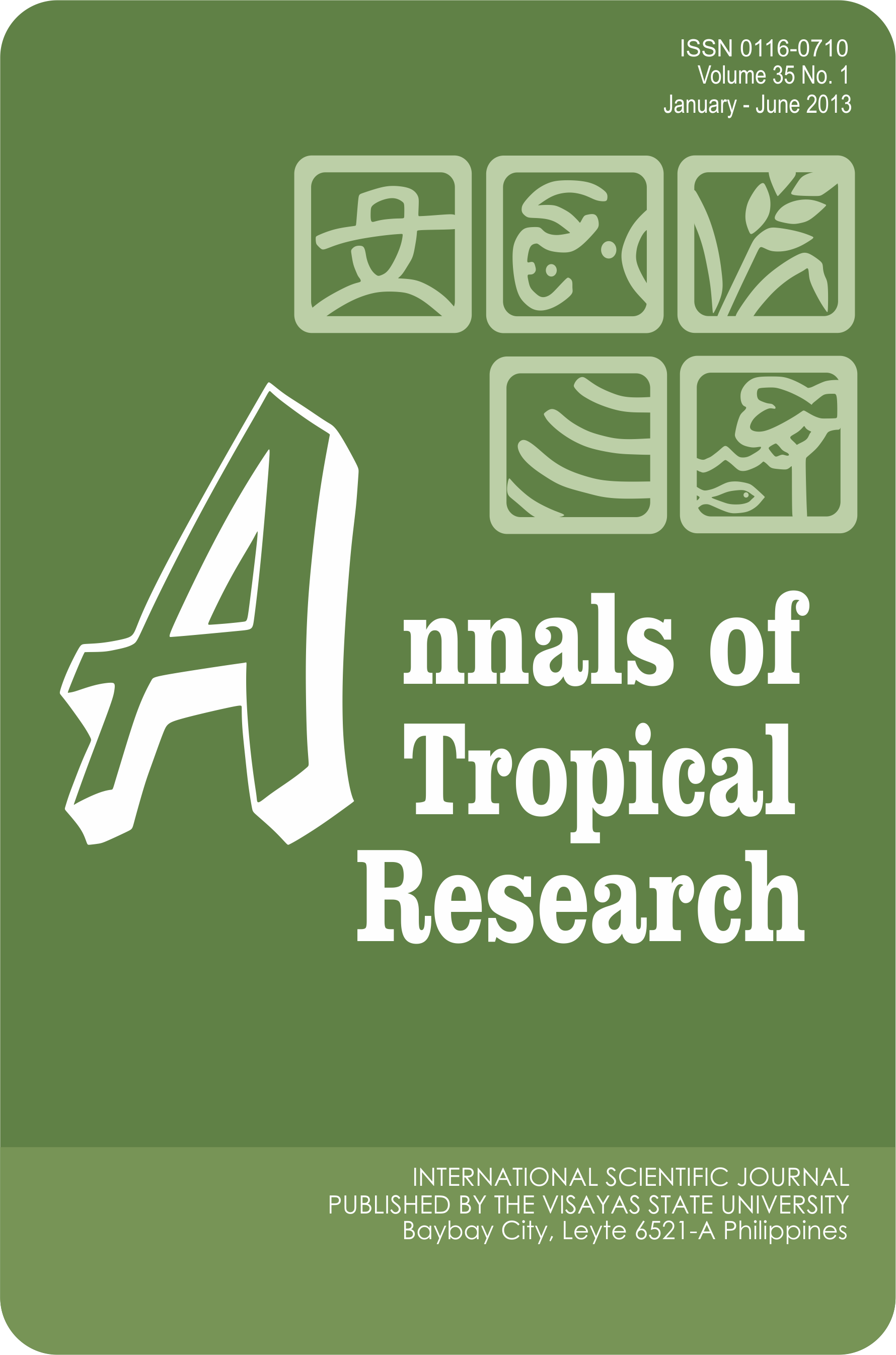Increasing Cabbage Production Through NPK Application In Cabintan, Ormoc City, Leyte, Philippines
DOI:
https://doi.org/10.32945/atr3518.2013Keywords:
fertilizer costs, nutrient loading, nutrient balance, levels of NPK fertilizers, cabbage yieldAbstract
One of the major issues affecting vegetable production in the Southern Philippines is the improper allocation of limited resources such as fertilizers due to lack of knowledge on the nutrient status of the soil. This study determined the effects of P application on P fertilizer efficiency and demonstrated the influence of N, P and K application in increasing the yield of cabbage (Brassica oleracea L.) in Cabintan, Ormoc City, Philippines. The treatments included: T1 – Farmers’ practice consisting of chicken manure (75 bags/ha) + Complete (12 bags/ha) + Urea (13.5 bags/ha); T2 – Ammophos (5.5 bags/ha) + Muriate of Potash (1 bag/ha); T3 – Ammophos (11 bags/ha) + Muriate of Potash (2 bags/ha); T4 – Ammophos (8.25 bags/ha) + Muriate of Potash (1.5 bags/ha). The study demonstrated the importance of applying appropriate levels of NPK fertilizers in improving the growth and yield of cabbage. It also revealed that reducing the fertilizer costs by 50 percent in Treatment 3 as compared to the farmer’s practice in Treatment 1 (i.e. from P38,400 to P16,800) would give a more sustainable yield as compared to the farmer’s practice. Reduction of fertilizer inputs from 444-93-142 kg/ha N- P2O5 -K2O to 88-110-60 kg/ha N-P2O5 -K2O in T3 will lead to a better allocation of limited resource that is available to the farmers.
Downloads
Submitted
Published
How to Cite
Issue
Section
License

This work is licensed under a Creative Commons Attribution-NonCommercial-ShareAlike 4.0 International License.











